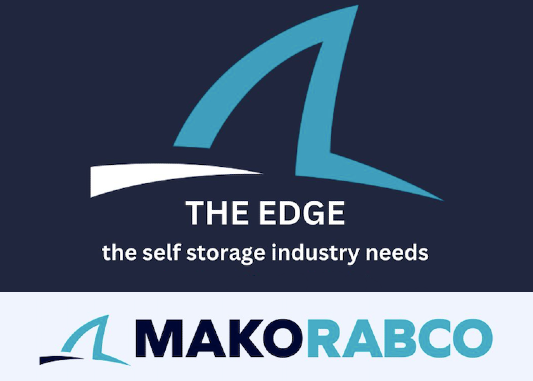Sync To Share: Arriving at the Data Sharing Era
In recent months, MSM has been highlighting the importance of data sharing in the self-storage industry. We’ve spoken with many storage leaders about the ways in which sharing data anonymously can strengthen the industry by giving everyone equal footing. Armed with current and accurate data, new owners and seasoned vets alike would be able to make more informed development and operational decisions.
It’s not that this idea is new, so what has stopped those in the industry from sharing in the past?
“People didn’t want to be bothered; they looked at it as just one more thing to do because a lot of the data would have to be inputted manually,” explains Chris Sonne, executive vice president of Newmark Valuation & Advisory Group.
Jeff Adler, vice president of Yardi Matrix, says that they’ve also considered data sharing initiatives. “We’ve thought about ways to get people to share data before,” he says. “So, we floated the idea around to REITs, independents … no one wanted it. In the end, they perceived that the benefit of lack of transparency exceeded the benefits of transparency.”
Despite disinterest from some self-storage owners and operators in the past, efforts to collect data persisted. Here’s a look at some of those initiatives.
2011: The SSA Initiative
Together, the two organizations have been collecting and analyzing information about historic self-storage operations and performance. Their quarterly data collection, aggregated from self-storage facilities throughout the country, includes market inventory, occupancy trends, general historic asking rental rate patterns, and other geographically based data points. SSA members receive discounts on the reports, using the research to support business decisions, particularly in the areas of facility valuation and feasibility studies.
These efforts continue to this day, but it’s not always easy. “Because of our partnership, REIS/Moody’s now track over 10,000 facilities,” says Mike Blackett, SSA’s senior vice president of marketing and communications. Of course, that’s only about one-fifth of the market. “They are always expanding facilities and data; it’s just getting that data from the stores/companies that’s difficult.”
2015: The STR Initiative
“[The STR launch] was largely driven by demand for a benchmarking platform in the industry, especially among those familiar with our more than three-decade track record in the global hotel industry,” says Nick Minerd, vice president of marketing and communications for STR. “Initially, the focus was on tracking and reporting inventory and development, but we were able to report on performance in dozens of MSAs by 2017. Early 2019 was when we decided to end our work in self-storage and redirect resources internally to our evolving hospitality product.”
Minerd says that those few years working within self-storage provided STR with new relationships and valuable learnings when it came to expanding benchmarking into new industries. “Our success in the hotel industry has been supported by a high level of consolidation, a uniform system of accounting, and a number of disciplines dependent on data,” he adds. “The data we presented to the self-storage industry was well-received, but in the end, there wasn’t going to be enough adoption and application of that data to continue our investment.”
2023: The Time Is Now
“I’ve been on this bandwagon since the 1990s when we were public,” says Mike Burnham, CEO at StorageMart. “I was pushing for other publicly traded companies to support it, but this was back when Public Storage didn’t even do quarterly conference calls; people didn’t want to share then. The world has changed. Self-storage is now a major food group, not an alternative asset class. There is demand for a database of information about self-storage that will help people understand the market better, and I’m all for it. We’ve been taking baby steps for 25 years; now it’s time to take a big step.”
Travis Morrow, president of National Self Storage, agrees. “The proliferation of property management software, which has moved data to the cloud, makes the sharing of data easier. It would allow operators to share their data anonymously with data services of their choosing … It’s as simple as turning on a ‘switch’ for the operator.”
To help flip that switch, MSM has spoken with numerous project management software companies in the self-storage industry, and although only one has this capability built in, all agree that creating it would be fairly simple—they just want to first understand more about their customers’ data needs. To help facilitate these conversations, click the button below and complete the 60-second online form.
–
Brad Hadfield is a news writer for Modern Storage Media and manages the MSM website.
More Content
Popular Posts
The self storage industry is in a precarious...
Joe Shoen, CEO of U-Haul, has had enough.
Like its name implies, Surprise, Ariz., a...
Joe Shoen has had enough.
In a record-breaking deal finalized May 12,...
Senate Bill 709 (SB709) has many in the...
Donald Trump has just reclaimed the White...
The question of “abandonment” of stored...
Self-storage operators wear a lot of hats....
In 1992, Clinton strategist James Carville...
Recent Posts
When Neville Kennard left for a work trip to...
Self-storage software is no longer...
The self-storage industry continues to...
Fires in California. Tornadoes in Kansas....
From policy pivots in Ottawa to tariff...
Self-storage operators have struggled to...
Their signature red coats may draw attention...
Nailing down Josh and Melissa Huff for an...




















